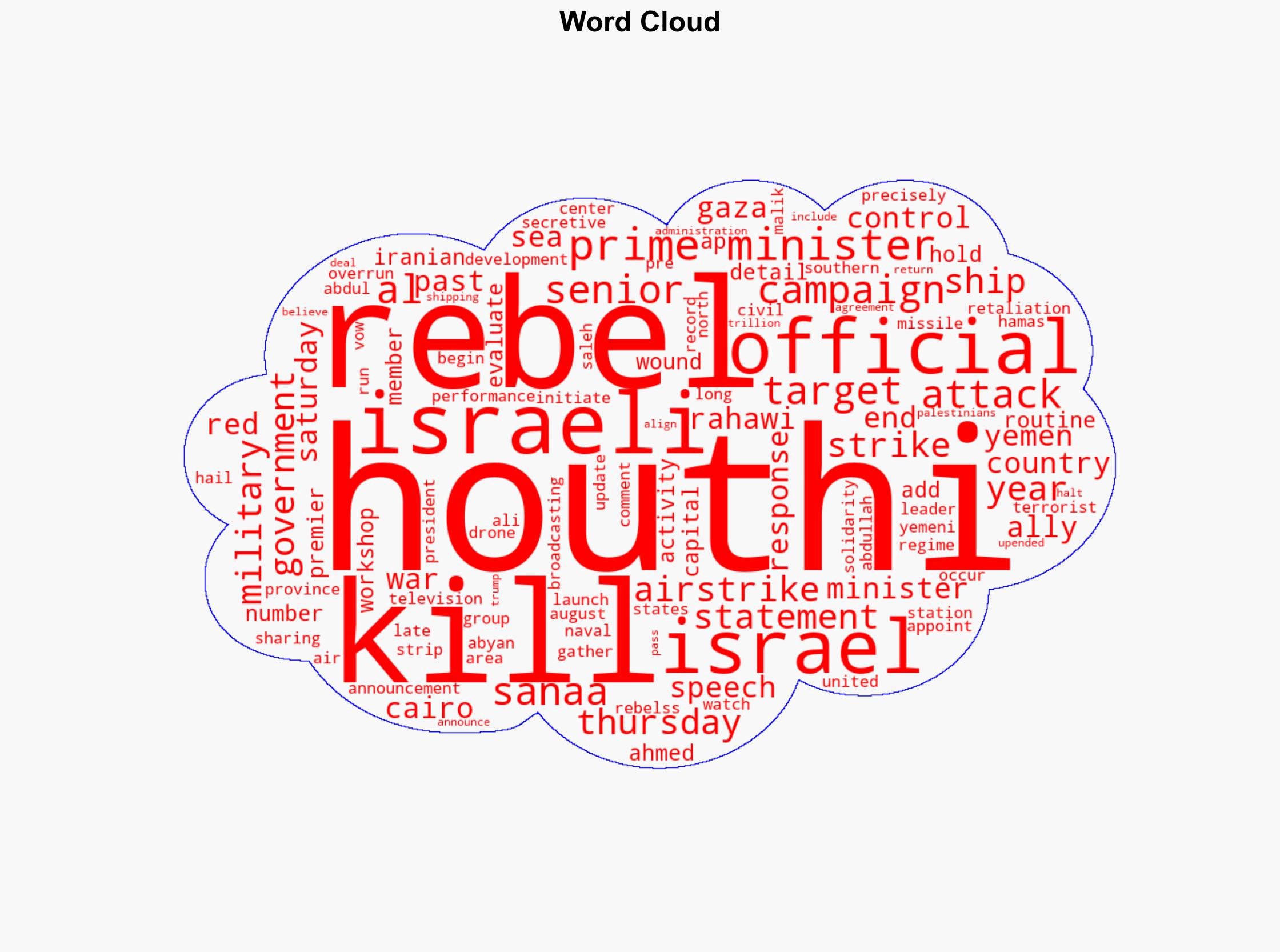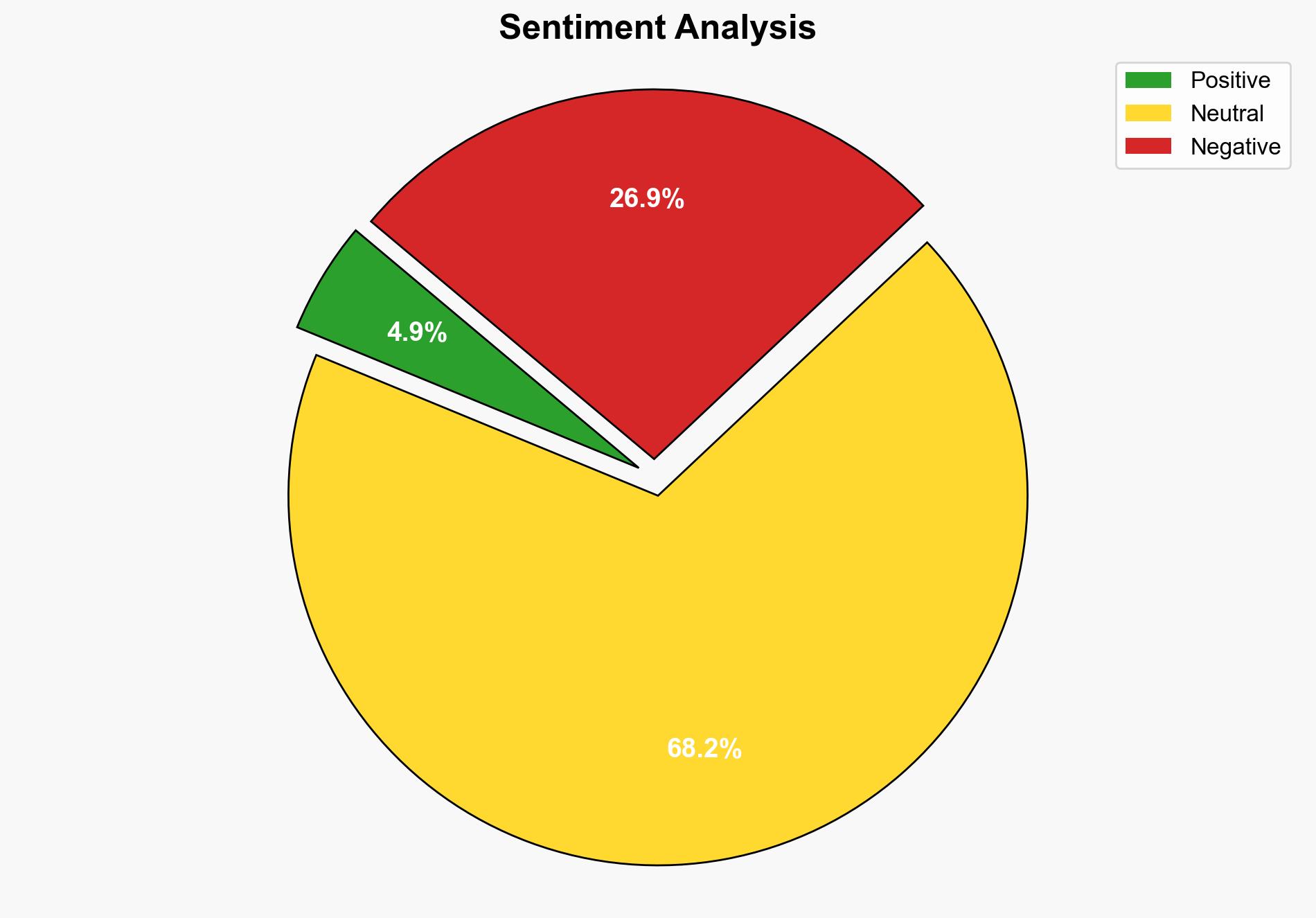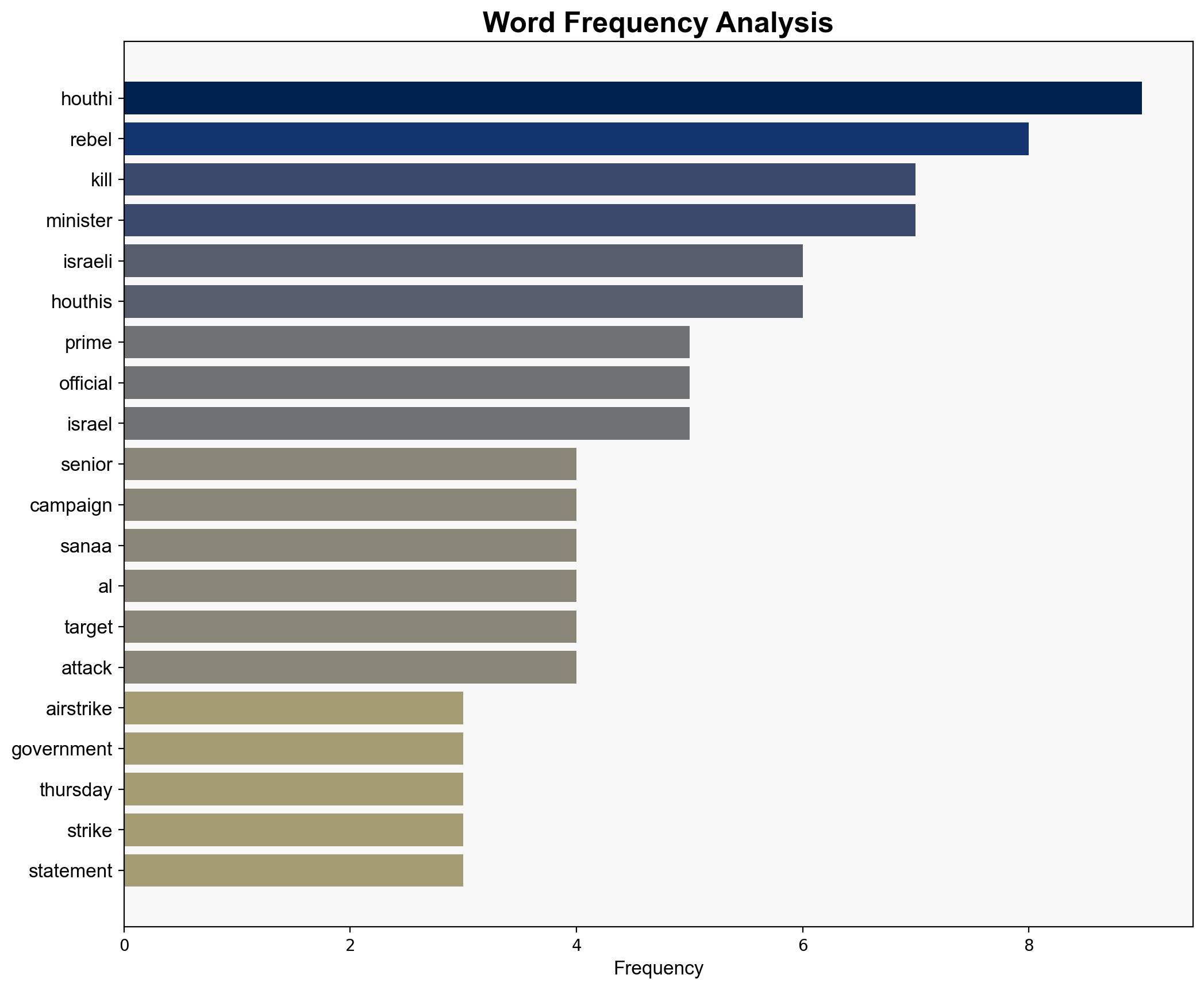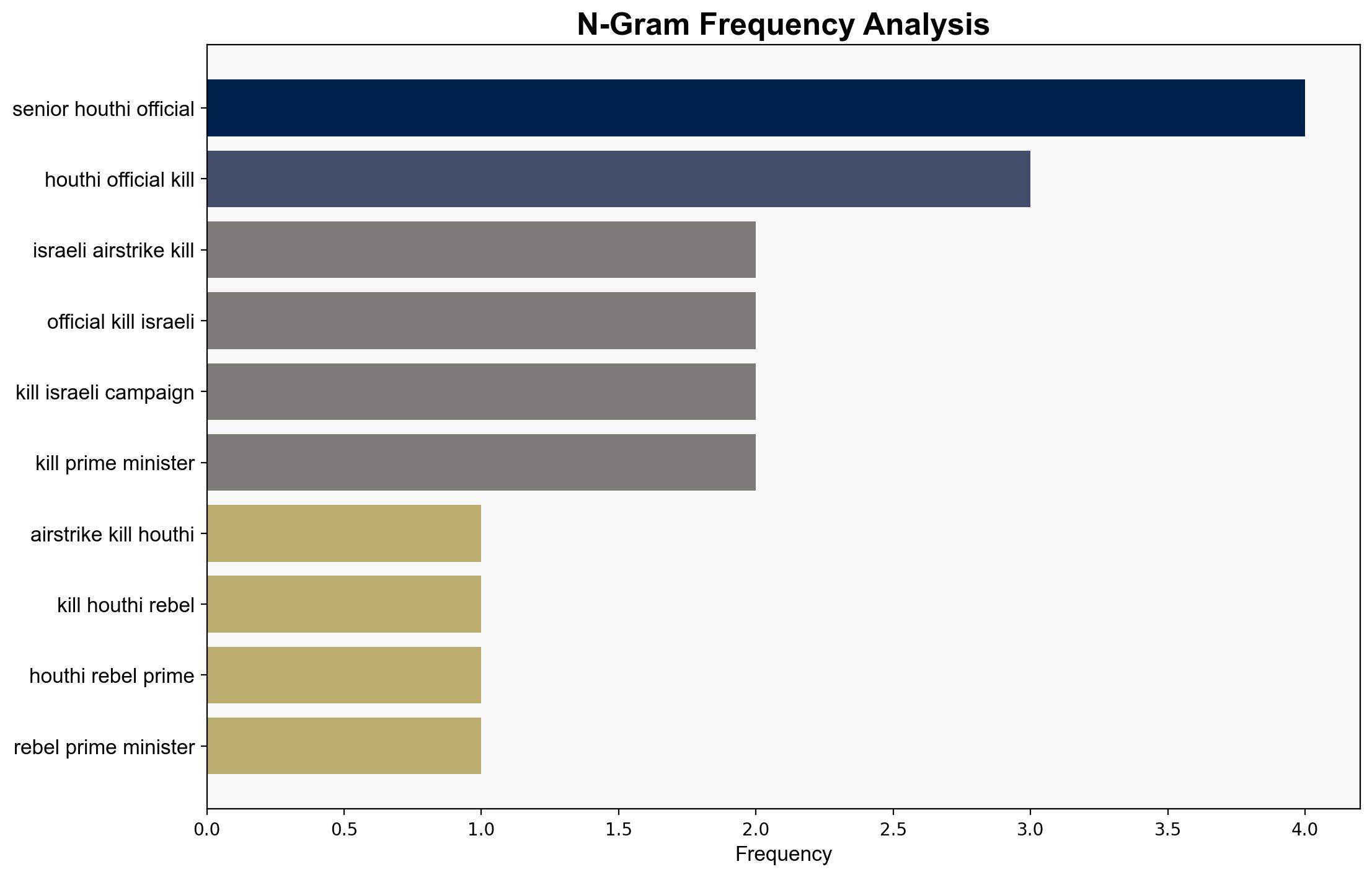Israeli airstrike kills Houthi rebel prime minister Houthis say – ABC News
Published on: 2025-08-30
Intelligence Report: Israeli airstrike kills Houthi rebel prime minister Houthis say – ABC News
1. BLUF (Bottom Line Up Front)
The most supported hypothesis is that the Israeli airstrike was a targeted operation against Houthi leadership, specifically aimed at disrupting their military capabilities and retaliatory potential. Confidence level: Moderate. Recommended action: Monitor regional military movements and prepare for potential retaliatory actions by Houthi forces or their allies.
2. Competing Hypotheses
1. **Hypothesis A**: The Israeli airstrike was a deliberate and precise operation targeting Ahmed al Rahawi to weaken the Houthi leadership and disrupt their operational capabilities.
– **Supporting Evidence**: The strike coincided with a gathering of senior Houthi officials, suggesting intelligence-driven targeting. The timing aligns with ongoing tensions and recent Houthi attacks on Israeli interests.
2. **Hypothesis B**: The airstrike was a broader military campaign aimed at multiple targets, with the death of Ahmed al Rahawi being collateral rather than the primary objective.
– **Supporting Evidence**: The statement from the Israeli military emphasized targeting “military targets” in the area, which could imply a wider operational scope.
3. Key Assumptions and Red Flags
– **Assumptions**:
– Hypothesis A assumes precise intelligence on Houthi leadership movements.
– Hypothesis B assumes a broader strategic objective beyond individual leadership decapitation.
– **Red Flags**:
– Lack of independent verification of the strike’s primary target.
– Potential bias in Houthi statements aiming to portray the strike as a direct attack on leadership to galvanize support.
4. Implications and Strategic Risks
– **Escalation Risk**: Potential for increased retaliatory attacks by Houthis or allied groups against Israeli or allied interests.
– **Geopolitical Impact**: Strain on regional alliances, particularly if the strike is perceived as an escalation beyond current conflict parameters.
– **Economic Threats**: Disruption in Red Sea shipping lanes could have broader economic repercussions given the volume of goods transiting the area.
5. Recommendations and Outlook
- Enhance intelligence-sharing with regional allies to preempt potential retaliatory actions.
- Prepare contingency plans for increased security measures around critical infrastructure and shipping routes.
- Scenario Projections:
– **Best Case**: De-escalation through diplomatic channels and cessation of hostilities.
– **Worst Case**: Escalation into broader regional conflict involving multiple state and non-state actors.
– **Most Likely**: Continued tit-for-tat exchanges with periodic escalations.
6. Key Individuals and Entities
– Ahmed al Rahawi
– Abdul Malik al Houthi
– Ali Abdullah Saleh
7. Thematic Tags
national security threats, regional conflict, military strategy, geopolitical tensions




